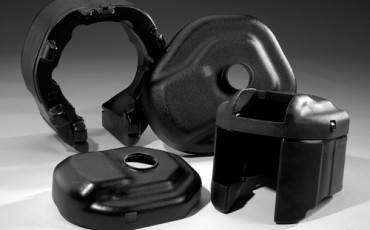
Rotational molding can produce hollow parts with closely-spaced parallel walls. Examples include insulated coolers, plastic boats and bins, and cushioned shipping cases. When designing parts like this, however, it’s important to understand how rotomolding works so that you leave enough room between the walls.
Powdered Plastic and Parallel Walls
The powdered plastic that’s used in rotomolding has a bulk density that’s greater than when this same material is molded into a finished part. Many factors that affect bulk density, including the amount of air that’s trapped in the particles (occluded air) and the amount of air between particles (interstitial particles). Different types of plastic particles also have different densities.
For part designers, the practical implications are about leaving enough room between the parallel walls. Specifically, there needs to be enough volume to accommodate the powdered plastic. There also needs to be enough space for the plastic to flow through the rotational mold and uniformly coat the walls of the mold’s cavity.
Designing Parallel Walls for Rotomolded Parts
When designing rotomolded parts with parallel walls, the minimum distance between two walls is typically three times the nominal wall thickness. For some designs, however, a distance that’s five times the nominal wall thickness is recommended instead. This is a mainly a function of the part’s design and how it affects the flow of powder.
For example, let’s say you’re designing a plastic bin with a handle. Because the handle will restrict the flow of powder, it’s better to use a distance between the walls that’s five times the nominal wall thickness. The handle isn’t the only design feature that affects the flow of powder, however. The angle between the parallel walls is also a factor since converging walls complicate the coating of corners.
Choose Gregstrom for Rotational Molding
Gregstrom Corporation of Woburn, Massachusetts (USA) is a third-generation, family-owned rotational molder that offers design assistance for projects with parallel walls. We can also help you with material selection and provide tooling services that let you capture complex part geometries in various sizes. In addition, we offer finishing services such as polyurethane foam filling.
Ready to get started with your next plastics project? Contact us.



